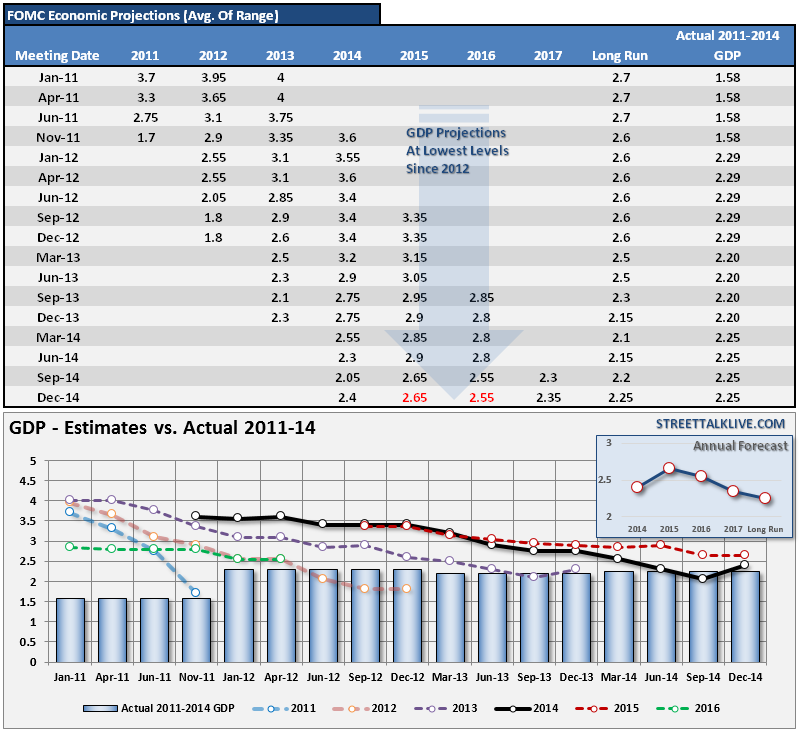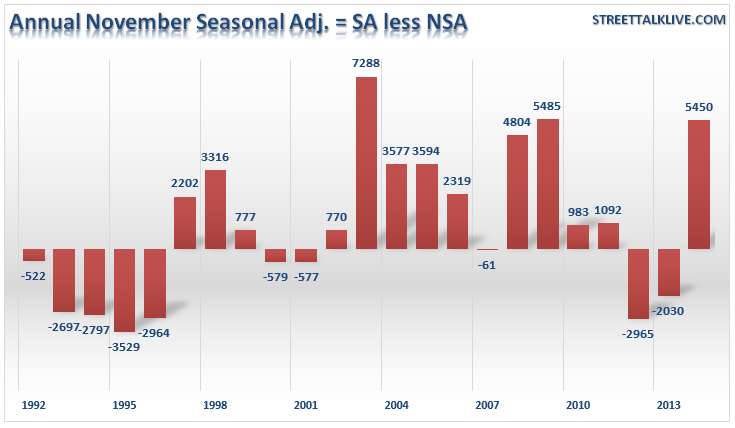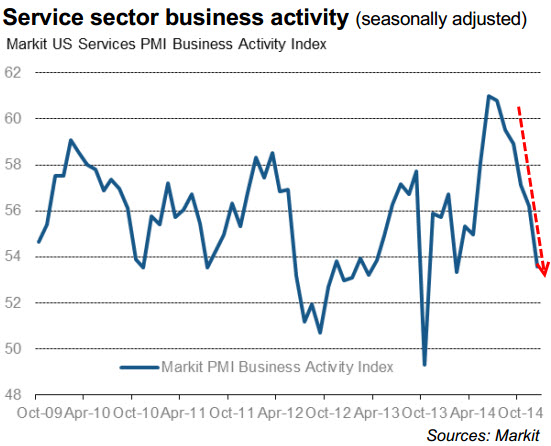The Fed's "You Say Potato; I Say Potatoe" Statement
Yesterday, the Federal Reserve released their financial FOMC meeting statement for 2014. The primary focal point by the financial markets has been answering the question of WHEN the Federal Reserve will begin tightening monetary policy by hiking interest rates. Yesterday, did not answer that question as Tim Duy summed up well:
"Policymakers were apparently concerned that removal of 'considerable time' by itself would prove to be disruptive. Instead, they opted to both remove it and retain it:
'Based on its current assessment, the Committee judges that it can be patient in beginning to normalize the stance of monetary policy. The Committee sees this guidance as consistent with its previous statement that it likely will be appropriate to maintain the 0 to 1/4 percent target range for the federal funds rate for a considerable time following the end of its asset purchase program in October, especially if projected inflation continues to run below the Committee's 2 percent longer-run goal, and provided that longer-term inflation expectations remain well anchored.'
If you thought they would drop "considerable time," they did. If you thought they would retain "considerable time," they did. Everyone's a winner with this statement."
As I have written in the past, the Fed has lost its focus of managing for price stability and "real" full-employment by trying to appease WallStreet and keeping its member banks "fat and happy."
(I say "real" full-employment because it is hard to suggest that the U.S. is anywhere near full-employment levels when only 46.5% of working-age individuals, those between the ages of 16-54, are employed full or part-time. Read here)
There are two important points to be made about yesterday's FOMC statement.
First, when the Federal Reserve has begun hiking interest rates in the past, GDP was averaging between 4% and 5% annual growth rates. The Fed historically has raised interest rates "slow" a rapidly growing economy and abate rising inflationary pressures. Now, however, the Fed is discussing raising interest rates in an economy that is barely growing above 2% with deflationary pressures and falling interest rates. As shown in the table below of the FOMC projections, estimates for future GDP growth remains at very sluggish levels.
My guess is that the Fed realizes that the economy, now over six years into the current expansion, is closer to the next recession than not. Therefore, the Fed likely feels compelled to raise interest rates regardless of near term market or economic consequences in order to have some capability of lowering rates to offset the next recessionary drag. Ironically, it will likely be the Fed's actions that trigger the next economic slowdown.
Secondly, it is important to remember that the Federal Reserve CAN NOT tell the truth. In a liquidity driven world where the financial markets parse and hang on every word uttered by the heads of Central Banks worldwide, can you imagine what would happen to the financial markets if Janet Yellen stated:
"Despite many years of supporting the financial markets in hopes of a resurgence of economic growth, it is committee's assessment that Keynesian economic theory is flawed. While our monetary interventions have inflated asset prices as desired, it has only served to widen the "wealth gap" while having little effect on the real economy. It is the conclusion of the committee that our policies have failed to achieve realistic economic objectives and has potentially imperiled the financial markets with a third 'asset bubble' in the last 15 years."
The ensuing collapse in the financial markets would immediately create a recessionary environment. Financial markets would crumble as credit markets froze as economic activity plunged. This is why there is such great emphasis focused on the Federal Reserve statement and the guidance they provide. It is also why the FOMC has repeatedly stated that following the end of the current large scale asset purchase programs (LSAP or QE) that they would continue to focus on the use of "forward guidance" as a policy tool.
The ability to "move" markets with words, rather than actions, has become the trademark of the European Central Bank (ECB) over the last couple of years. It is ultimately the hope that the Federal Reserve can pull off the same trick as they begin to extract liquidity and accommodation from the financial markets as the economic recovery takes hold. The problem for the Federal Reserve is that they are still looking for that elusive economic recovery to take hold after more than six years. Unfortunately for the Fed, economic recovery cycles do not last forever, and the clock is ticking.
Retail Sales Not What They Seem
I have been extremely vocal about the fact that shifting consumption from gasoline sales to retail sales does not create economic growth. It is just a "shift" in where the same dollars are spent.
However, there has been much "hoopla" over the recent retail sales report for November that saw retail sales jump for the month by 0.7%. While on the surface this appears to be a strong retail sales report, a quick look below the surface quickly destroys that claim.
First, as shown below, the "seasonal adjustment" to the retail sales report was the fourth largest in the history of the report. Of particular note, in the last two years, the seasonal adjustment were negative. The three previous record level adjustments were made immediately following the last two recessions.
Secondly, let's take a look at the NON-seasonally adjusted data for some guidance using a simple 12-month moving average to smooth the data rather than a potentially corrupted, by the financial crisis, seasonal adjustment methodology.
As suspected, there is little evidence to support that retail sales actually surged in November. While the seasonally adjusted data, which is rather volatile, the smoothed NSA data suggests a weaker retail, consumer, spending environment. This corresponds closely with the premise that I discussed recently in the weekly newsletter that falling gasoline prices really have little impact on overall retail sales. To wit:
"While the argument that declines in energy and gasoline prices should lead to stronger consumption sounds logical, the data suggests that this is not the case.
Simply put, lower oil and gasoline prices may have a bigger detraction on the economy that the “savings” provided to the consumer
In any economy, nothing works in isolation. For every dollar increase that occurs in one part of the economy, there is a dollars’ worth of reduction somewhere else.
The data over the next couple of months will be interesting to watch.
Chart Of The Day
I previously noted the divergence the economic indicators such as the ISM surveys and actual industrial production. Today's release of the Market Service Sector activity shows a continued drop in services activity that belies recently released ISM Services surveys and retail sales data. Importantly, both cannot be right.




